Home is the most precious place on earth. This is the place where everyone feels safe and comfortable and creates lots of memories with their loved ones. Buying or building a place you can call home is a dream for everyone. Some people turn this dream into a reality. However, with the passing of time and the changing climate, your precious place will eventually start to incur damage. As a homeowner, it is important that you be aware of the signs of structural damage in your home, as it might lead to serious consequences if ignored.
Unfortunately, many times homeowners are not aware of these signs until it becomes a serious problem. There are several reasons why your home can be damaged. If there is low-grade material used for the construction of your home or if your home is lacking maintenance, extreme weather conditions such as storms, floods, and earthquakes can also be the reason for damaging your home. Blocked pipes can lead to flooding and poor drainage. Wind and rain can cause erosion that can lead to structural damage.
Here, we will go through some common signs of structural damage and how one can identify them, as some signs can be quite unnoticeable. Doing so is important, as only then will you be able to call a professional to fix them, ensuring the safety and stability of your home so that it can last for many more decades.
1. Cracks On Walls And Ceilings
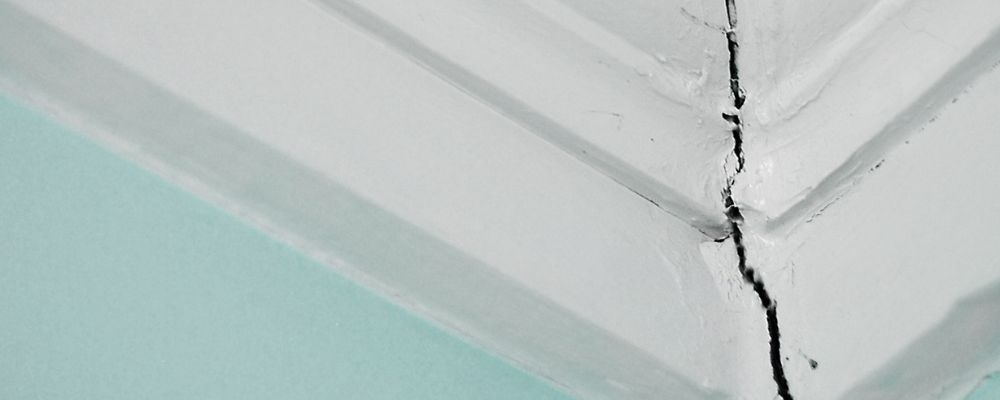
One of the main signs of structural damage is when you start to see cracks in walls and ceilings. There are two types of cracks: internal and external. Internal cracks in homes are mostly harmless and can only affect the appearance of the house. They usually result from the settling of the house. Both external and internal cracks are caused by water and shifting foundations.
When water bleeds into your home’s foundations, it can cause the soil to expand or contract, which will eventually increase the pressure on the walls and ceilings of your home, causing them to crack. Another reason is the shifting in the foundation, which is usually the result of lateral earth pressure. This happens when the soil around your house starts to move, forcing the structure of the walls to form cracks. It is important to keep an eye on them, as they can turn into something dangerous if not fixed on time.
2. Cracks In The Chimney

Cracks in your chimney are another major sign, and it is very easy to spot the cracks on the bricks of your chimney from outside the house. It can be a serious problem, as chimneys are an essential part of the structure of a house. It provides ventilation and supports the weight of the roof. One of the main reasons for chimney cracks is the ageing of the house. When the ground beneath it shifts, it causes the foundation to sink or settle.
When this happens, the weight of the house puts pressure on the chimney, causing it to crack. It might be small and unnoticeable, but as time passes, the cracks get wider and become a structural issue. Changing climates also have an effect on the chimneys; heavy winters and strong snowfall can cause the mortar to contract and expand, which results in cracks. Chimney cracks can cost a lot in repairs, but if not repaired, they can be a threat to your home. So don’t ignore the cracks, as they might be a warning sign.
3. Balky Doors
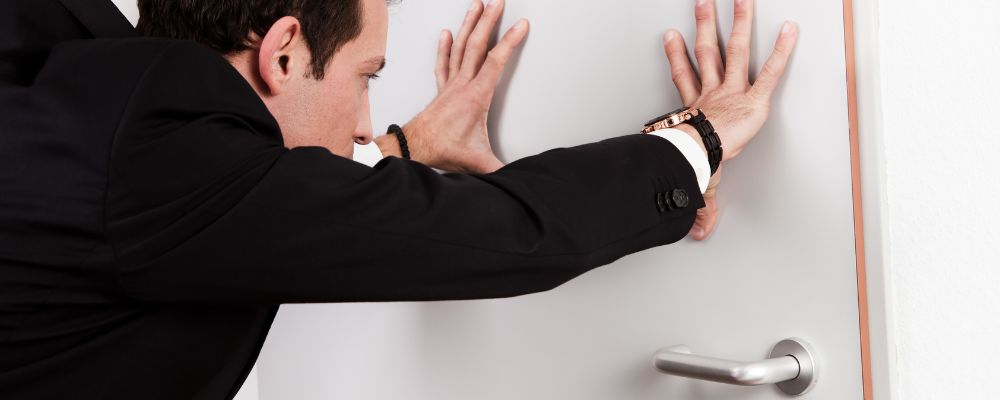
Balky doors are a problem when the door starts to get jammed and give trouble while opening and closing it. Not being able to close or open the door when you want to can be pretty irritating, but instead of being angry, a person needs to figure out why this is happening. It could be a simple problem of the latch or hinges not working properly, which you can easily fix by tightening up the screws and putting in some oil.
And even if the problem has been fixed, you might need to call a professional. But it could be a sign that there are some changes in your home foundation, and that means there can be structural damage. In this condition, a person should consider seeking the help of a contractor to check the foundation of the home and determine if there is a bigger problem to deal with that needs to be addressed.
4. Window Cracks
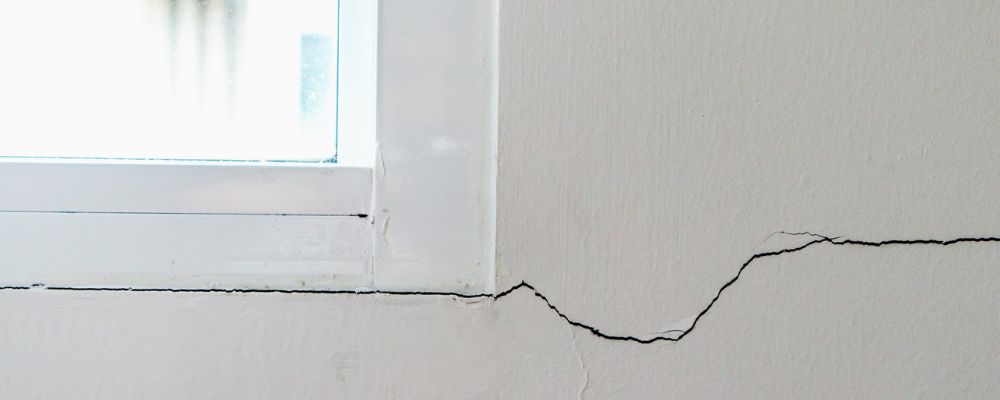
A crack suddenly appears out of nowhere on your window, while there is no sign of a hit. Window cracks might seem like a small and insignificant matter at first, but they can be a warning sign of a much bigger problem. There are a few reasons why window cracks should not be ignored. Firstly, cracks in windows can result from shifting in the house’s foundation.
It can happen due to changes in the soil, moisture level, and poor construction. Water damage can also be the reason for the cracks; it can weaken the structure of the house and lead to mould growth, which can be harmful to human health. Window cracks should not be ignored, as they can be a sign of serious structural damage in a home. It is important to fix these cracks as soon as possible to avoid any further damage and ensure the safety of your home.
5. Roof Leaks

Another sign of structural damage is when your roof starts leaking. The roof is one of the most important components of a house because it provides protection and helps maintain the overall structural goodness of the building. When your roof starts to leak, it is a signal that there is an issue that needs to be fixed. One of the reasons for roof leaks is the damage to the roof itself. Changes in weather conditions such as rain, wind, and sun can result in damage to the roof, leading to cracks, gaps, and other forms of damage.
If the damage is not repaired on time, the situation can get even worse and weaken the structure of the home. Ignoring roof leaks will not only make it a bigger problem that will require lots of money to fix, but it can also be dangerous. Water can make your roof weaker and cause it to collapse during storms or other natural disasters. To avoid such accidents, a person needs to do regular maintenance and timely repairs for the safety and integrity of their home.
6. Slow Water Flow

It is very important to pay close attention to any changes that occur in the water flow in your home. One common issue that homeowners can experience is slow water flow, which is a sign of structural damage in their home. Slow water flow can be noticed when there is low water pressure in your taps and shower, trouble draining sinks and tubs, and decrease the amount of water coming out of appliances like the dishwasher and washing machine.
The reason for the slow flow of water can be because of the blockage in your pipes. These blockages can lead to a complete clog and cause major problems in your daily routines. Another reason can be old or damaged pipes. With time, pipes can become rusty, which can lead to a reduction in the water flow. Other than that, it can also happen due to foundation problems causing the pipes to shift and become misaligned. Slow water flow is not a problem that should be taken lightly or ignored. It is a sign of structural damage in your home.
7. Cracking Of Floors
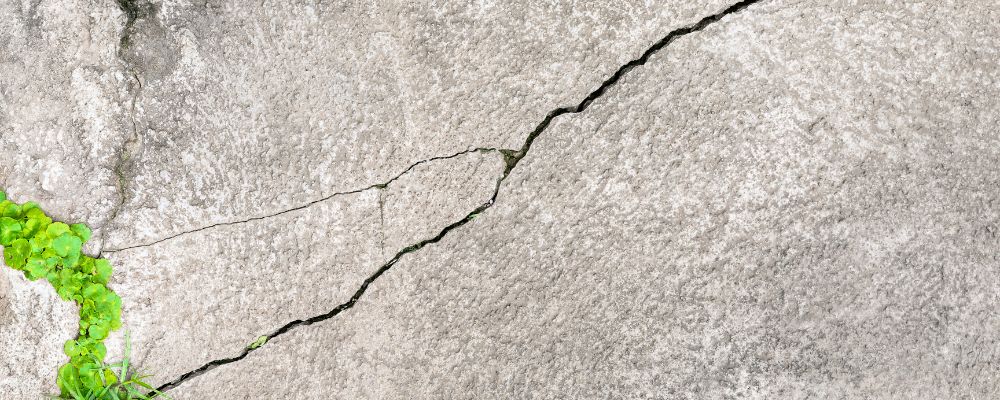
One of the serious problems that should not be ignored or taken lightly is the crack in the floor. It is a sign that your home is facing structural damage, which can lead to several other problems if not fixed. The floor provides a stable surface for people to walk on without trouble, so it is a necessary part of any building. When cracks start to appear, it is a clear sign that there is something wrong with the foundation of your home.
This can happen due to several reasons, like poor soil conditions, improper construction, and natural disasters like earthquakes. Floor cracks can get worse with time and can cost you a huge amount of money to repair. It is important to have proper maintenance and time-to-time inspections to avoid cracking floors. Fixing the cracks in the floor should be done as soon as possible to avoid further complications.
8. Mould Walls

Moulded walls are more than just a decorative issue in your home. They can lead to serious health and safety concerns and are a sign of structural damage. Mould is a kind of fungus that grows in damp and moist places. Walls with moisture or water damage are the perfect breeding ground. If ignored, mould can spread very quickly and cause damage not only to you but also to the structure of your home. Mould feeds on organic materials like wood and drywall.
These materials are commonly used in the construction of homes, and as mould grows and spreads, it weakens the materials, which compromises the structure and leads to damage. Mould can also release spores into the air that can spread to other areas of your home and give off a bad smell, making it hard to live in your home. Moulded walls are not something to be taken lightly, as they are a clear signal of structural damage in your home and can pose serious health risks if left untreated.
9. Damp Sub-Floors
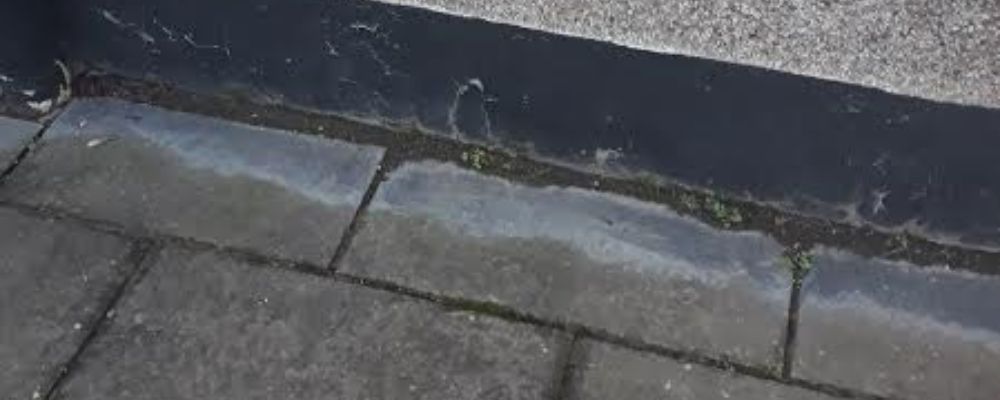
Damp sub-floors are a quite common problem that many homeowners face and can also be a sign of structural damage in the home. A subfloor is made of wood or concrete and is important for supporting the weight of the floor above. When a subfloor becomes damp, it can cause lots of problems. Not only does it weaken the structure of your home, but it also creates health hazards. The cause of damp sub-floors is water sources like leaks, floods, and high levels of humidity.
This problem can lead to several issues, like uneven floors, squeaky boards, and, worse, the possibility of the floor collapsing. In addition, damp sub-floors can create a habitat environment for mould to grow. If this problem is left untreated, then moisture can spread over the entire floor, causing it to rot and weaken the floor. Homeowners should be aware of the signs of damp sub-floors so that they can fix them as soon as possible before they become a big problem.
Conclusion
It is essential for homeowners to be aware of and alert to the signs of structural damage in their homes. Avoiding or ignoring the signs won’t get it fixed and can surely increase the problem, which will eventually lead to bigger problems and costly solutions. These signs can compromise structure, be hazardous to safety, and decrease the value of property. A homeowner should have a regular inspection of the house every once in a while to catch the early signs of the problem and take the necessary steps to fix them.
It is important to seek help from a professional, qualified contractor or engineer if you suspect any structural damage to your home. A safe and structured home is important for your and your family’s well-being.
Frequently Asked Questions
A person can tell about structural damage by looking at these signs: cracks in their walls or foundation; doors or windows no longer fitting properly in their frames.
Structural damage can be extremely bad, and it can harm the safety, stability, or habitability of your home. A foundation can have issues like roof damage or damage to load-bearing walls. This type of damage can put your home at risk of collapsing or failing.
The most common causes of structural damage are active soils, improper drainage, or poor designs. Research has shown that the most common cause is insufficiently compacted filled material, which can result in structural failure.
Structural deterioration or structural damage can be defined as changes in the materials that affect the overall structural performance.
When a structure fails, it can cause a building to partially or completely collapse. If a structure fails, it will cause serious injuries and the deaths of many people. A defective building is at risk of collapsing while it is under construction or after it is completely built.

